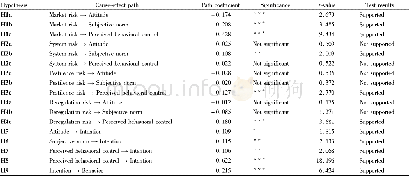《Table 1:Coding Results》
 提示:宽带有限、当前游客访问压缩模式
提示:宽带有限、当前游客访问压缩模式
本系列图表出处文件名:随高清版一同展现
《From Importation to Innovation: The Perspective of Organizational Inertia's Effects》
Note:*denotes wildcard in GERP search;|denotes“logical disjunction”.Source:Compiled by authors based on Level-3 Coding results.
Referencing content analysis method and the coding process of Lyu et al.(2015),this paper conducts three-level coding of extensive qualitative information,with the conceptual labels thus formed to be used in follow-up case data analysis.Step 1:conduct Level-1 coding of valid case information based on case data sources.While repetitive information from the same source is normalized,repetitive information from different sources is combined.Level-1 coding leads to a Level-1 Citation Database with 245 citations.Step 2:association notations are made to citations in Level-1 Citation Database by different stages,products and events to form Level-2 codes.In Level-2 coding,single-association notations are made to citations by the degree of association between citation description and different stages/products/events to develop 257 Level-2 citations.Step 3:citations in Level-2 Citation Database are conceptually labelled to form Level-3 code library.A few preset keywords are selected to measure variables referencing literature on organizational inertia and organizational learning.In the conceptual labeling process,Atlas.ti7.0 qualitative data analysis software is used to assist coding:(1)Keyword connotations are made to individual citations referencing the definitions of constructs and variables.(2)Keyword annotation results are exchanged for review,and inconsistent results are deleted to form 679Level-3 code entries.(3)Annotated keywords are compared with preset keywords,and assigned to the measurement variables of organizational inertia’s negative and positive effects,explorative learning and exploitative learning based on semantics,while inter-rater reliability test is adopted using the confusion matrix recommended by Marques and Mc Call(2005)with inter-rater reliability of 601/679=88.51%.Entries with inconsistent assignments are deleted.Finally,a total of 78 entries are deleted,and 601 valid Level-3 code entries are obtained.Via Level-3 coding and classification of case data,consistent keyword labels and variable assignments are obtained for each code entry.Table 1 shows final distribution of constructs,measurement variables and keywords in different stages of import-based technology innovation.
| 图表编号 | XD007223900 严禁用于非法目的 |
|---|---|
| 绘制时间 | 2018.05.08 |
| 作者 | 吕一博、韩少杰、苏敬勤 |
| 绘制单位 | Faculty of Management and Economics, Dalian University of Technology、Faculty of Management and Economics, Dalian University of Technology、Faculty of Management and Economics, Dalian University of Technology |
| 更多格式 | 高清、无水印(增值服务) |





